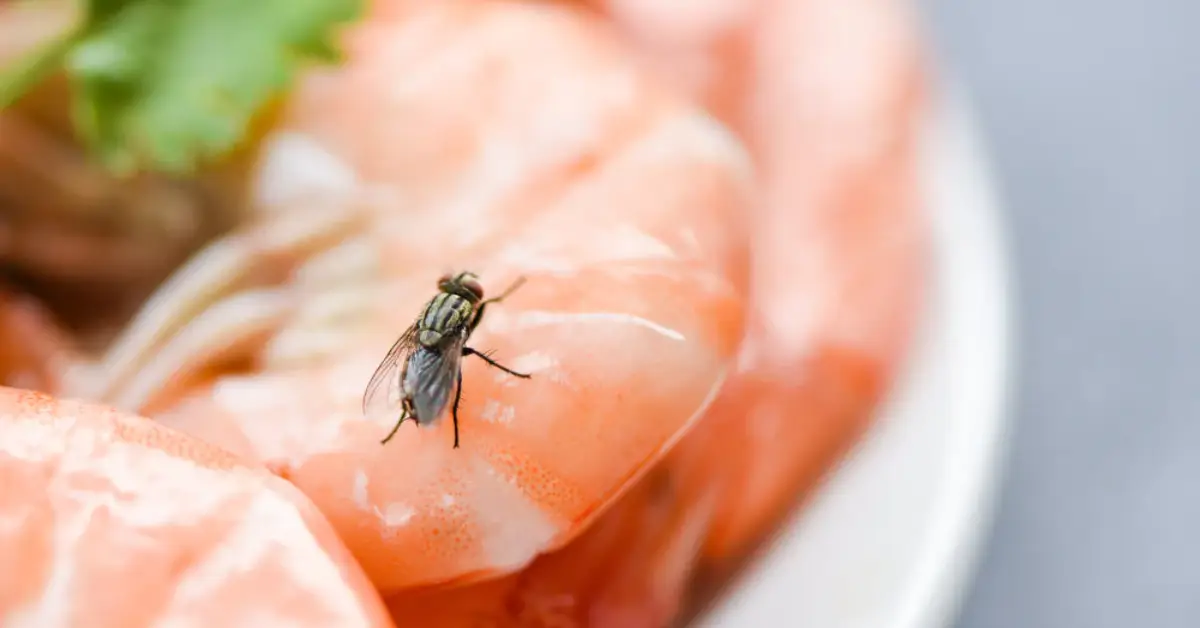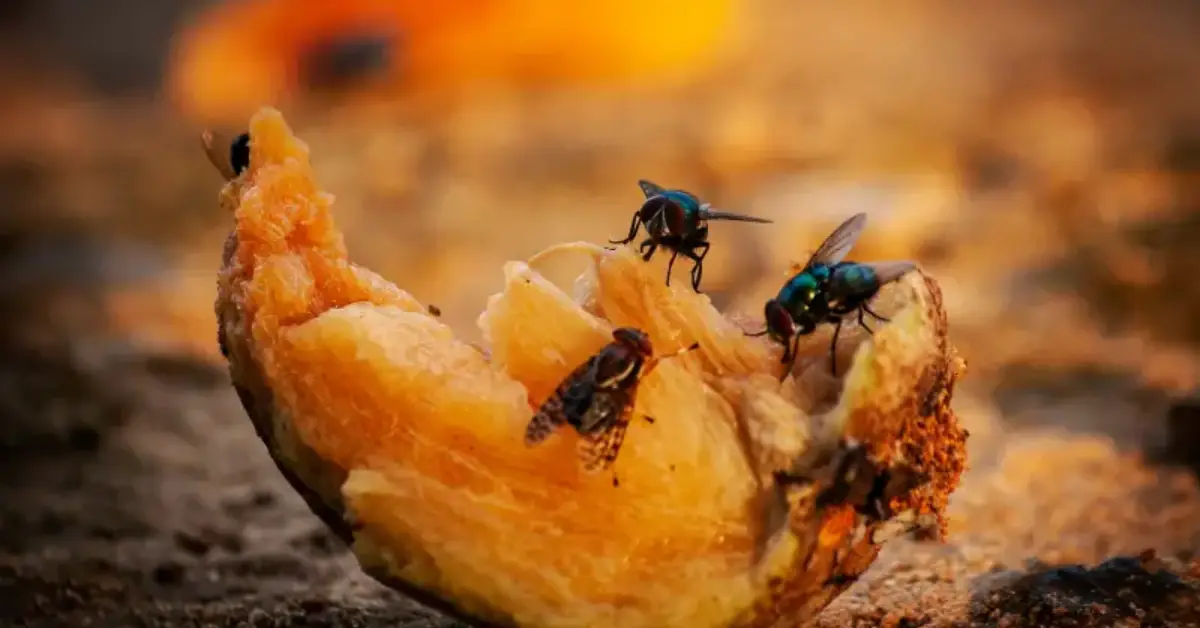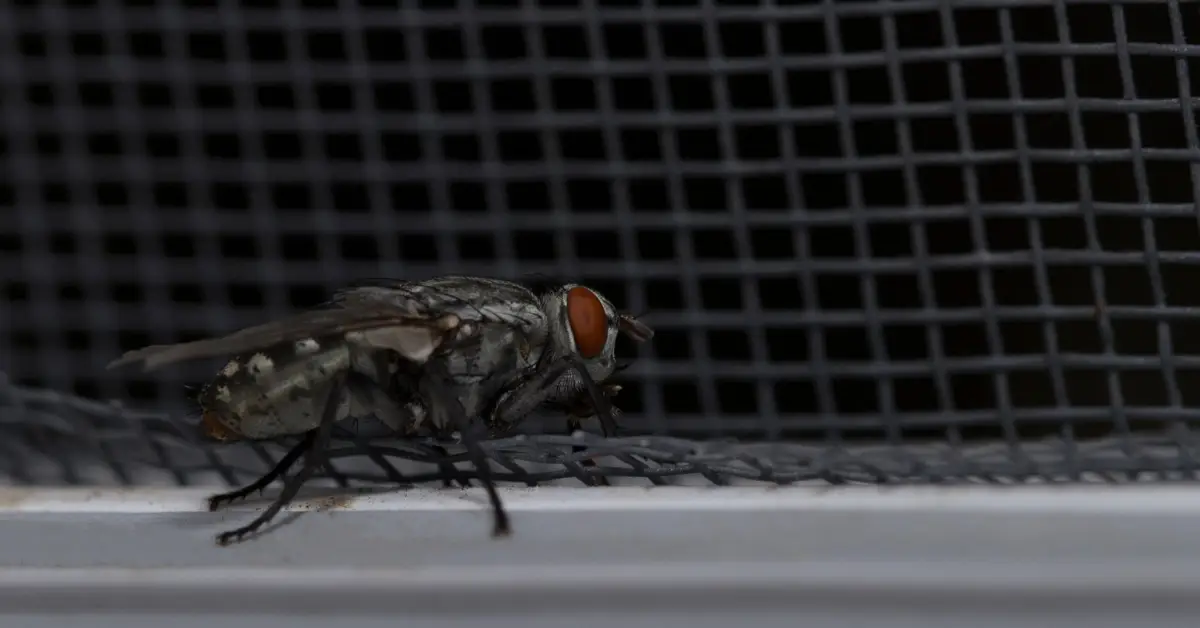8 Tricks That Can Help You Get Rid of Houseflies Instantly
I don’t know about you, but few things test my patience more than houseflies buzzing around the kitchen when I’m trying to cook or eat. They always seem to show up out of nowhere — landing on food, hovering near the sink, and disappearing the second you grab a flyswatter.
Most people deal with flies the same way: they spray something, shoo them away for a day, and think the problem’s solved — until the next morning, when a few more appear. That’s because most quick fixes only kill what you see. The real issue lies deeper: breeding spots, leftover food scents, and small entry points we ignore.
Over the years, working with pest-control professionals and managing home hygiene myself, I’ve learned that keeping flies out isn’t about one trick — it’s about a system. In this guide, I’ll walk you through eight proven ways to not only get rid of houseflies fast but also stop them from coming back.
Everything here is based on what actually works — verified pest studies, expert insights, and even a few clever hacks people have shared online that surprisingly hold up. Whether you want natural methods or professional-grade options, you’ll find something practical you can do today.
So before you grab another can of spray, let’s understand what’s really drawing flies to your home — and how to finally put an end to it. Have you noticed any pattern to when or where flies appear most in your home — like around fruit bowls, drains, or pet areas?
Why Houseflies Keep Coming Back — Understand the Enemy
You can’t win against an enemy you don’t understand — and houseflies are far more stubborn than they look. Most people swat a few, feel victorious, and move on. But within hours, a fresh batch shows up, as if the last swarm sent reinforcements. That’s not bad luck — it’s biology and habit at work.
The Biology Behind the Common Housefly
Houseflies breed and multiply at an unbelievable rate. One female can lay up to 500 eggs in just a few days, and those eggs hatch within 24 hours. In warm, humid weather, you can go from one fly to a full-blown infestation in under a week.
- Flies don’t live long (about 20–30 days), but during that short time, they reproduce nonstop.
- Their larvae thrive in moist, decaying organic matter — garbage bins, drains, compost, even pet waste.
- Houseflies can carry over 100 different pathogens, from bacteria like E. coli and Salmonella to parasitic worms — which means every time they land on food or utensils, they could be leaving behind more than just a dirty footprint.
So, while you’re swatting at one, dozens more are being born somewhere nearby.
What Attracts Houseflies Indoors

If you’ve ever wondered, “Why my house?” — the answer usually lies in plain sight.
- Food scraps left uncovered, sticky counters, or unwashed dishes attract flies faster than you’d think.
- Moisture and organic waste — like a damp mop, a half-open trash can, or that forgotten fruit at the bottom of the bowl — are their favorite breeding zones.
- Entry points such as open windows, torn screens, or doors left ajar are easy gateways.
They follow the smell of decay and fermentation, so even a few crumbs or drops of juice are enough to invite them in.
Why Most One-Off Fixes Fail — The “Return” Factor
The truth is, killing a few flies doesn’t solve anything. Unless you destroy their breeding grounds, they’ll keep coming back.
- Sprays or traps catch the adults you can see, not the larvae you can’t.
- Skipping one day of cleaning can restart the entire cycle.
- Warm months accelerate breeding, so a tiny lapse becomes a major problem.
Once you realize flies don’t just “arrive” — they grow from within your environment — every method ahead makes a lot more sense. You’re not just killing pests; you’re breaking their cycle.
Way 1 — Secure Entry & Seal Off the Home
Let’s start with prevention. If flies can’t get inside, you’ve already solved half the problem. Think of your home as a sealed system — every tiny gap or loose mesh is an open invitation.
Installing and Maintaining Window/Door Screens
Screens aren’t just old-school décor; they’re your first line of defense.
- Check every window and door for holes or tears — even a small rip is enough for flies to crawl through.
- Clean screens regularly; dust buildup can prevent them from closing properly.
- If you keep windows open often, invest in magnetic mesh screens that seal automatically after you walk through.
Repairing Gaps, Sealing Cracks & Weather-Stripping
Flies are opportunists. They’ll squeeze through door gaps or broken seals faster than you can spot them.
- Apply weather-stripping tape under doors and along window frames.
- Use silicone caulk to close cracks around vents or air-conditioning units.
- Don’t forget bathroom exhaust fans or dryer vents — these are often overlooked entry points.
Strategic Airflow: Using Fans to Push Them Out
A clever trick from homeowners online: place a standing fan near open windows or doors, pointing outward. The continuous airflow creates pressure that flies can’t navigate against — they literally can’t fly into your house. Small step, big impact. Control the airflow, and you control the entry.
Way 2 — Eliminate Their Food, Drink & Breeding Sites
Once your house is sealed, you need to make it uninviting. Flies don’t stick around for the view — they come for food and moisture. Cut off their supply, and they’ll have no reason to stay.
Kitchen Hygiene: Covering Food & Cleaning Spills Immediately
Your kitchen is ground zero for fly attraction.
- Always cover fruits and cooked food.
- Wipe down counters, stoves, and dining tables after every meal.
- Don’t let dishes soak overnight — the smell of leftover food or soap attracts them.
- Rinse recyclables like cans or bottles before tossing them.
Even a single dirty sponge can become a fly magnet overnight.
Manage Trash & Compost
According to experts at Mortein, uncovered trash is one of the most common breeding sources for houseflies.
Follow a simple routine:
- Use bins with tight-fitting lids.
- Take out trash daily, especially during warm months.
- Clean your compost bin often, and never leave pet waste lying around.
Outdoor Hotspots

Sometimes, the problem starts outside — and moves in.
- Clear out decaying leaves or old fruit from gardens.
- Drain stagnant water and clean gutters.
- Keep the area around garbage bins dry and odor-free.
You’ll notice a major drop in fly activity once the environment itself becomes unfriendly to them.
Way 3 — Quick-Kill & Trapping Methods (For Flies Already Inside)
Even with perfect prevention, a few will still sneak in. When they do, you need fast, effective ways to eliminate them.
DIY Vinegar + Dish Soap Trap
This simple trick works like a charm.
- Pour apple cider vinegar into a small bowl.
- Add a few drops of dish soap and stir.
- Leave it uncovered near problem areas (sink, fruit bowl, trash can).
The vinegar attracts flies, and the soap breaks the surface tension — trapping them instantly. It’s safe, cheap, and surprisingly effective. If you love low-cost, eco-friendly solutions, you’ll want to check out how versatile vinegar really is — it doesn’t just trap flies; it can prevent them entirely. Read more in our guide on 7 Genius Ways to Use Vinegar and Say Goodbye to Flies Forever.
Commercial Flypapers, Sticky Traps & Light Traps
If DIY isn’t enough, pair it with professional tools.
- Sticky strips work best near windows or hanging lights.
- UV light traps draw flies in and trap them silently — great for kitchens or garages.
- Replace or clean traps weekly to keep them effective.
Natural Sprays (Essential Oils & Citrus)
Flies hate strong scents like peppermint, eucalyptus, and lemongrass.
- Mix 1 cup water + 10 drops of essential oil + 1 tsp vinegar in a spray bottle.
- Mist around entry points, windowsills, and counters.
It won’t just repel flies — your kitchen will smell fresh too.
By now, you’re not just reacting — you’re taking control. Each small step compounds, and soon your home becomes a space flies simply can’t thrive in.
Way 4 — Long-Term Repellents & Habits That Keep Flies Away
Once you’ve handled the immediate infestation, it’s time to think long-term. Getting rid of flies is one thing — keeping them away is another. The secret lies in turning your home into a place flies simply don’t want to be.
Plants & Herbs That Repel Flies
I’ve always preferred natural repellents over chemical sprays — and plants do an excellent job. Flies hate the smell of certain herbs, especially basil, mint, lavender, and lemongrass.
- Place small pots near kitchen windows, balconies, or patio doors.
- You can also crush fresh leaves occasionally to release more aroma.
- A few sprigs of basil or mint in vases indoors keep the air fresh and the flies at bay.
According to The Sun, homeowners who kept basil and lavender near their kitchen windows reported noticeably fewer flies over time.
Strategic Placement of Fans, Lighting, and Décor

Believe it or not, how your home is lit and ventilated affects fly behavior.
- Keep fans running on low speed in kitchens or dining areas — flies struggle to land in moving air.
- Avoid bright white lights near doors or open windows at night — they attract insects from outside.
- Opt for warm-toned bulbs or motion-sensitive outdoor lighting instead.
- Keep clutter and paper piles to a minimum — they love undisturbed corners.
Small tweaks in airflow and light placement make a big difference in how inviting your space feels to pests.
Seasonal Check-Ups: Reviewing Outdoor Cleanliness
Flies thrive in warm, moist environments, so each season needs its own cleanup routine.
- Spring/Summer: clear drains, scrub garbage bins, trim overgrown plants.
- Monsoon/Fall: remove decaying leaves or fallen fruit from gardens.
- Winter: store compost bins properly and clean window sills or air vents.
Think of it as “seasonal maintenance” for a fly-free home. The more consistent you are, the fewer surprises you’ll face.
Way 5 — Targeted Fixes for Specific Problem Areas
Most guides stop at general advice, but houseflies are sneaky — they breed in hidden places we overlook. Here’s how to deal with those less obvious zones.
Pet Areas: Waste, Food Bowls, Comforters
If you have pets, you already know how fast flies gather around their food or waste.
- Clean pet bowls daily and dry them after washing.
- Dispose of waste immediately, especially in hot weather.
- Wash bedding and comforters weekly; lingering odors attract flies even if you can’t smell them.
A small change in your pet-care routine can drastically reduce fly activity around the house.
Drain, Sink & Garbage Disposal Zones
This is one of the biggest blind spots. Flies lay eggs in moist organic buildup around drains.
- Pour a mix of boiling water + vinegar + baking soda down the sink weekly.
- Use a drain brush to scrub away residue.
- Keep garbage disposals dry when not in use — moisture equals breeding ground.
Outdoor Seating & Patio Areas
Your patio or backyard can become a fly magnet during cookouts or parties.
- Keep drinks covered and food sealed until served.
- Use citronella candles or essential-oil diffusers outdoors.
- Clean up spills immediately and rinse trash bins after use.
These little steps keep outdoor spaces pleasant without resorting to harsh chemicals.
Way 6 — Safe Use of Chemical & Professional Options (When DIY Isn’t Enough)
Sometimes, even the best prevention plan needs backup. If you’ve done everything right but still see clusters of flies, it’s time to bring in professional help or use controlled chemical options safely.
Over-the-Counter Insecticides: What to Look For
Not all sprays are created equal — and some can harm pets or irritate kids.
- Choose indoor-safe aerosol sprays or plug-in vaporizers with clear safety certifications.
- Always spray away from food, dishes, or open water sources.
- Ventilate the room well after using.
Stick to products with pyrethrin-based formulas, which are effective but break down quickly without leaving toxic residue. If you’re serious about keeping your home pest-free all year, combining a few simple maintenance habits with the right prevention tricks makes all the difference. Here’s our guide on 10 Smart Home Hacks to Keep Pests Out All Year.
When to Call a Professional Pest Control Service
If you’ve seen clusters of flies even after deep cleaning, it’s time to call a licensed pest control expert. They can:
- Identify hidden breeding zones you might miss.
- Treat the source instead of just visible flies.
- Offer targeted indoor-safe fumigation or fogging solutions.
Professional treatments can sound expensive, but they’re often a one-time fix that saves months of frustration.
Integrating Chemical Methods with Your DIY System
The smartest approach is combination control — use chemicals to wipe out infestations fast, then rely on natural repellents and habits to maintain results.
- Use traps and natural repellents after chemical treatments.
- Re-seal entry points immediately after professional service.
- Keep a weekly cleaning routine so the flies don’t return once the chemicals fade.
Balance is key — not everything has to be chemical, but not everything can stay DIY either.
Way 7 — Monitoring, Maintenance & Habit Changes That Stop Re-Infestation

This is where most people drop the ball. Getting rid of flies isn’t the challenge — staying fly-free is. Long-term success comes from consistent monitoring and habit tweaks that stop reinfestation before it starts.
Monthly “Fly-Audit” Checklist
Do a quick 5-minute inspection every month:
- Check screens and seals for tears or gaps.
- Clean trash bins and replace liners.
- Refresh fly traps or vinegar bowls.
- Wipe pet feeding areas and drains.
Think of it like a routine health check for your home. During your monthly inspection, pay attention to less obvious corners — you’d be surprised how many tiny spots quietly attract bugs and flies. Discover more in our post on 6 Hidden Spots in Your Home That Attract Bugs (and How to Fix Them).
Signs the Fly Population Is Returning
Stay alert to early warnings — catching them early makes all the difference.
- Sudden buzzing near drains or trash bins.
- Small black dots (fly droppings) near windowsills.
- Increased fly activity around dusk or after rain.
When you notice these, act immediately instead of waiting for a full swarm.
Documenting Results
If you’re serious about keeping flies out for good, keep a simple log.
- Note where you saw flies, what method worked, and what didn’t.
- Track how long traps remain effective.
- This record helps you spot patterns and refine your approach over time.
By turning fly control into a habit, not a reaction, you’ll never have to deal with a buzzing kitchen again.
Way 8 — Educating the Household & Creating a Fly-Resistant Culture
No matter how perfect your cleaning routine is, one careless move by someone else in the house can bring flies right back. The truth is, fly control isn’t a one-person job — it’s a shared habit. When everyone in the family understands the “why” behind these steps, keeping flies away becomes effortless.
Quick Training Tips: Kids, Pets & Guests — Why Their Habits Matter
You don’t need to lecture anyone — just build small habits that stick.
- Teach kids to close the door fully when they go in or out.
- Ask them to throw snack wrappers directly into sealed bins, not leave them on tables.
- For pet owners, make it a rule: food bowls get washed daily, and litter or waste is cleaned right after use.
- When guests visit, gently remind them to keep food covered or use screens if you’re hosting outdoors.
These small cues create consistency, and that’s what stops re-infestation before it starts.
Visible Reminders: Labels on Trash Bins, Scheduled Cleanup
Visual cues work better than memory. A few smart reminders go a long way:
- Stick labels on trash bins — “Seal It. Empty Daily.”
- Keep a printed “clean-up checklist” near the kitchen or laundry area.
- Set calendar reminders for weekly drain cleaning or compost disposal.
The goal isn’t to micromanage — it’s to make fly control part of daily life, like washing hands or brushing teeth.
Real Users Doing It Right
It helps when people see that real families are solving the same issue. One Reddit user shared a clever tip:
“Buy a bag of Diatomaceous Earth … plume it all over your yard … flies come in through cracks so plume those.” — Reddit
It’s simple, affordable, and genuinely works for outdoor control. Use examples like these to motivate others in your home — especially those who need a little extra convincing.
Putting It All Together — Your 4-Week Fly-Free Plan

You’ve learned what attracts flies, how to stop them, and how to keep your home clean and sealed. Now, let’s turn that knowledge into action. Here’s a short, structured plan you can start this week — one that’s easy to follow and gets real results.
Week 1: Entry-Point & Immediate Kill
- Inspect and seal cracks, fix screens, and repair loose seals.
- Use fly traps or vinegar bowls to eliminate the existing flies.
- Clean all visible surfaces and start running fans near entry points.
By the end of week one, visible fly activity should already drop.
Week 2: Food/Breeding Elimination + Set Traps
- Deep-clean the kitchen — wipe down cabinets, mop under appliances.
- Take out garbage daily and wash bins with vinegar solution.
- Set 2–3 vinegar traps or light traps in high-traffic zones.
This is when you cut off the next generation before it starts.
Week 3: Preventive Habits + Repellents
- Add fly-repelling plants (mint, basil, or lemongrass) near windows.
- Keep essential-oil spray handy for daily use.
- Reinforce good habits: cover food, clean pet bowls, wipe spills fast.
Once you notice fewer flies, focus on consistency — not intensity.
Week 4: Maintenance Check + Household Training
- Do a “fly-audit” — review bins, drains, outdoor areas, and entry points.
- Replace worn screens or damaged weather-stripping.
- Review the routine with your household — make sure everyone’s on board.
Keep a short checklist visible for the next few months. It’s easier to maintain than restart.
How to Evaluate Success
You’re officially fly-free when:
- You go three weeks without seeing new flies indoors.
- Traps stay mostly empty for several days in a row.
- Food stays untouched, and outdoor bins remain clean.
If you ever notice new activity, repeat Week 2 — that’s your quick reset.
It’s full of seasonal reminders and household maintenance tips that fit perfectly with this system.
By now, your home should feel calmer, cleaner, and entirely yours again — no buzzing distractions, no hidden breeding grounds. You’ll find that the more you practice these steps, the less you’ll ever need to think about them. If you try this 4-week plan, tell me — which step made the biggest difference for you? Sometimes, one small fix changes everything.
Final Thoughts & Pro Tips from the Field
If you’ve made it this far, you already know that keeping houseflies away isn’t just about killing a few — it’s about creating habits that make your home naturally unwelcoming to them. After two decades of observing homes, one thing stands out: consistency beats intensity every single time.
Reminder: Consistency Beats Intensity in Pest Control
A quick deep clean once a month won’t fix much if the trash lid stays open daily or food sits out overnight. The key is doing a few small things every day — sealing bins, wiping surfaces, checking drains, and inspecting windows. Think of it like dental care for your home: a little routine keeps bigger problems away.
Stay alert, not obsessive. The difference between a fly-free home and a frustrating one is habit, not effort.
Little Hacks You Might Not Have Seen
Some of the best tricks don’t come from labs — they come from real people experimenting online. One popular hack that’s surprisingly effective is the penny-in-water trick that went viral on social media.
Here’s how you do it:
- Fill a clear plastic bag or glass halfway with water.
- Drop in a few shiny pennies.
- Hang it near doors, patios, or windows.
It works because the light reflections confuse flies’ vision, keeping them from landing nearby. Cheap, easy, and oddly satisfying to watch in action.
How Solving This Contributes to Overall Home Hygiene & Health
Flies don’t just irritate — they contaminate. According to multiple studies, houseflies can carry over 100 different pathogens, including bacteria that cause food poisoning and stomach infections. Keeping them out isn’t only about comfort; it’s about protecting your family’s health, maintaining a cleaner kitchen, and even extending the freshness of your food.
When your home is fly-free, it feels calmer — meals taste better, the air smells fresher, and you can finally open your windows without worry.
So start small, stay consistent, and treat fly prevention as part of your home’s daily rhythm.
I’d love to know — which trick or habit from this guide are you planning to try first? Drop your experience or question in the comments below.
For more real-life home care systems, DIY fixes, and smart hygiene tips, visit Build Like New — where every small step helps your home feel brand new again.
Disclaimer: The information in this article is for general educational purposes only. Always follow product safety instructions and consult a licensed pest control professional for severe or recurring infestations. Build Like New is not responsible for any misuse of products or DIY methods mentioned here.


